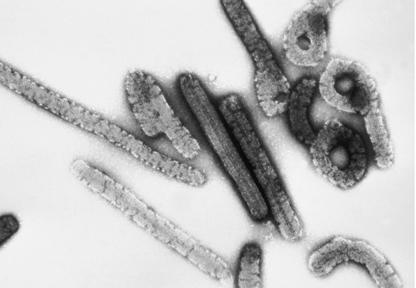The threadlike viruses Ebola and Marburg are covered in tiny spikes that enable them to stick to healthy cells and inject their genes, hijacking the cellular machinery to reproduce. The mystery is how these simple microbes subsequently attack the body’s immune system, causing fatal hemorrhagic fever in humans and apes. Epidemiology professor W. Ian Lipkin recently made a breakthrough, identifying a protein in Ebola and Marburg similar to an amino-acid sequence found in other viruses that cause immunosuppression, including HIV. The discovery could help scientists develop new preventive drugs and treatments.
Health workers in central Africa, meanwhile, are struggling to control hemorrhagic fever, a highly contagious disease with no cure or approved vaccine. A new diagnostic tool, the GreeneChip, developed by Lipkin’s research team at the Jerome L. and Dawn Greene Infectious Disease Laboratory, could help. The GreeneChip is faster and more comprehensive than existing diagnostic technology, Lipkin says, because it tests for a wide variety of viruses, bacteria, fungi, and parasites using a computer database that contains the pathogens’ genetic makeup. It can simultaneously screen for hemorrhagic fever, malaria, tuberculosis, and other respiratory infections, which is crucial, Lipkin says, because such illnesses have similar symptoms that make them difficult to differentiate.
The World Health Organization used the GreeneChip successfully during a Marburg viral outbreak in Angola last year, and Lipkin is discussing with WHO officials the possibility of deploying the technology in the organization’s medical labs worldwide.
Researchers at the Greene Lab also have developed a new method for identifying pathogens that cause flulike illnesses. Described in the November 6 issue of The Journal of Infectious Diseases, the technology, called MassTag PCR, can detect a broader range of infectious agents than can traditional diagnostic methods. “That means doctors will know whether an illness is caused by a virus or bacterium, and therefore what drug to prescribe,” says Lipkin. His research team used the technology recently to identify a new virus that caused a rash of respiratory illness in New York State two years ago and has since turned up in Europe and Asia. “Currently, if doctors make the wrong assumptions about which infectious agents to test for,” he says, “they won’t find what’s causing the illness.”



